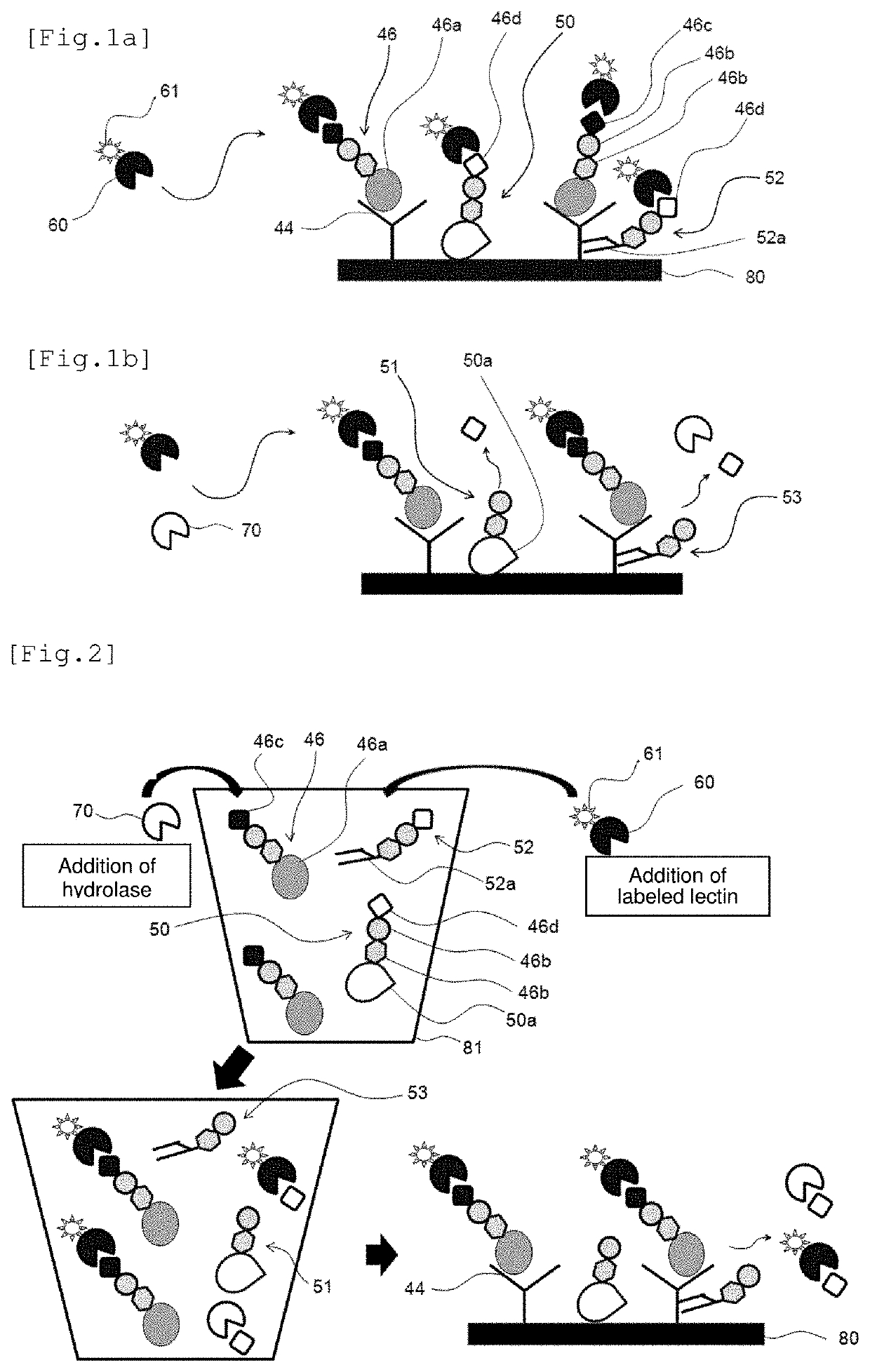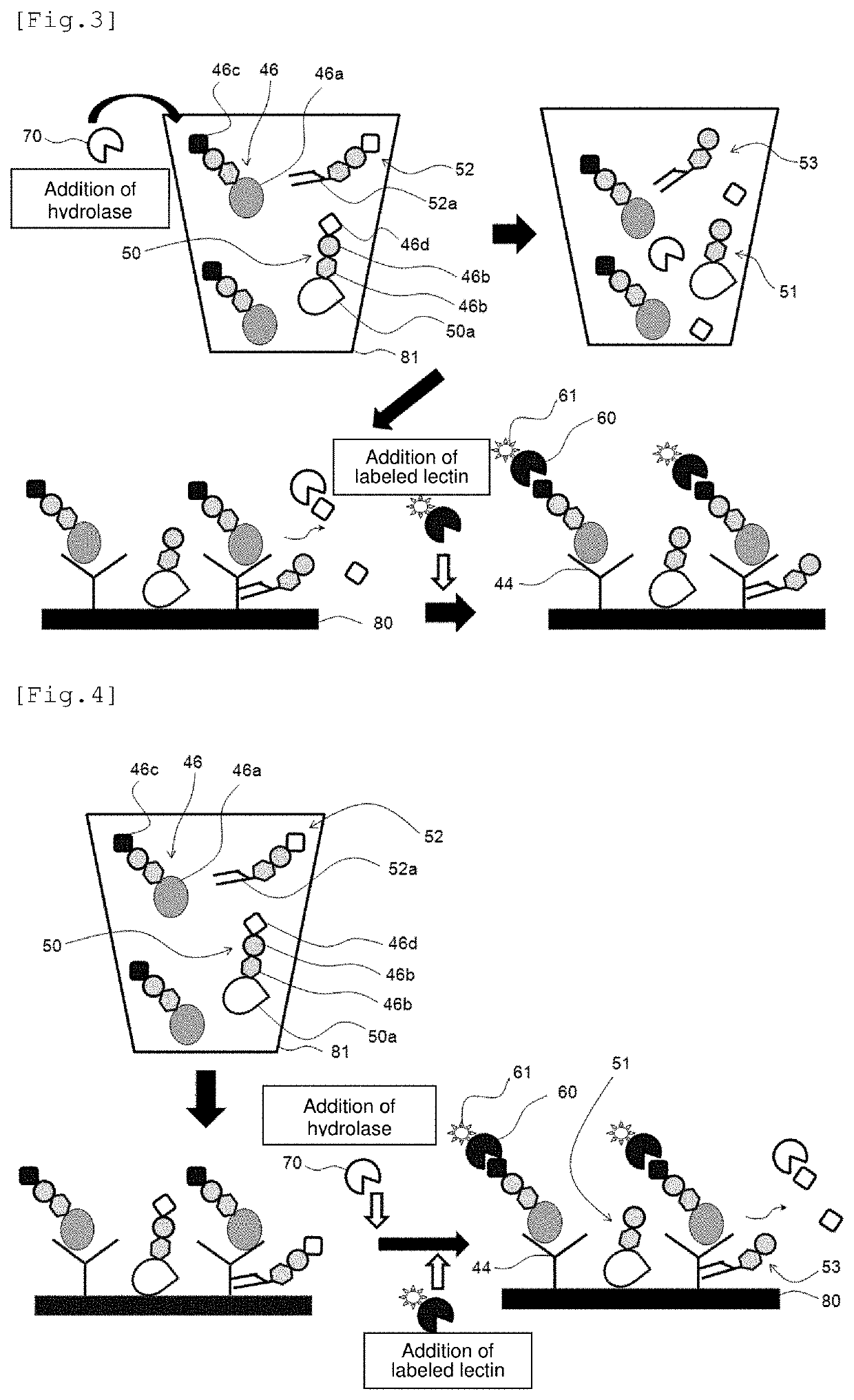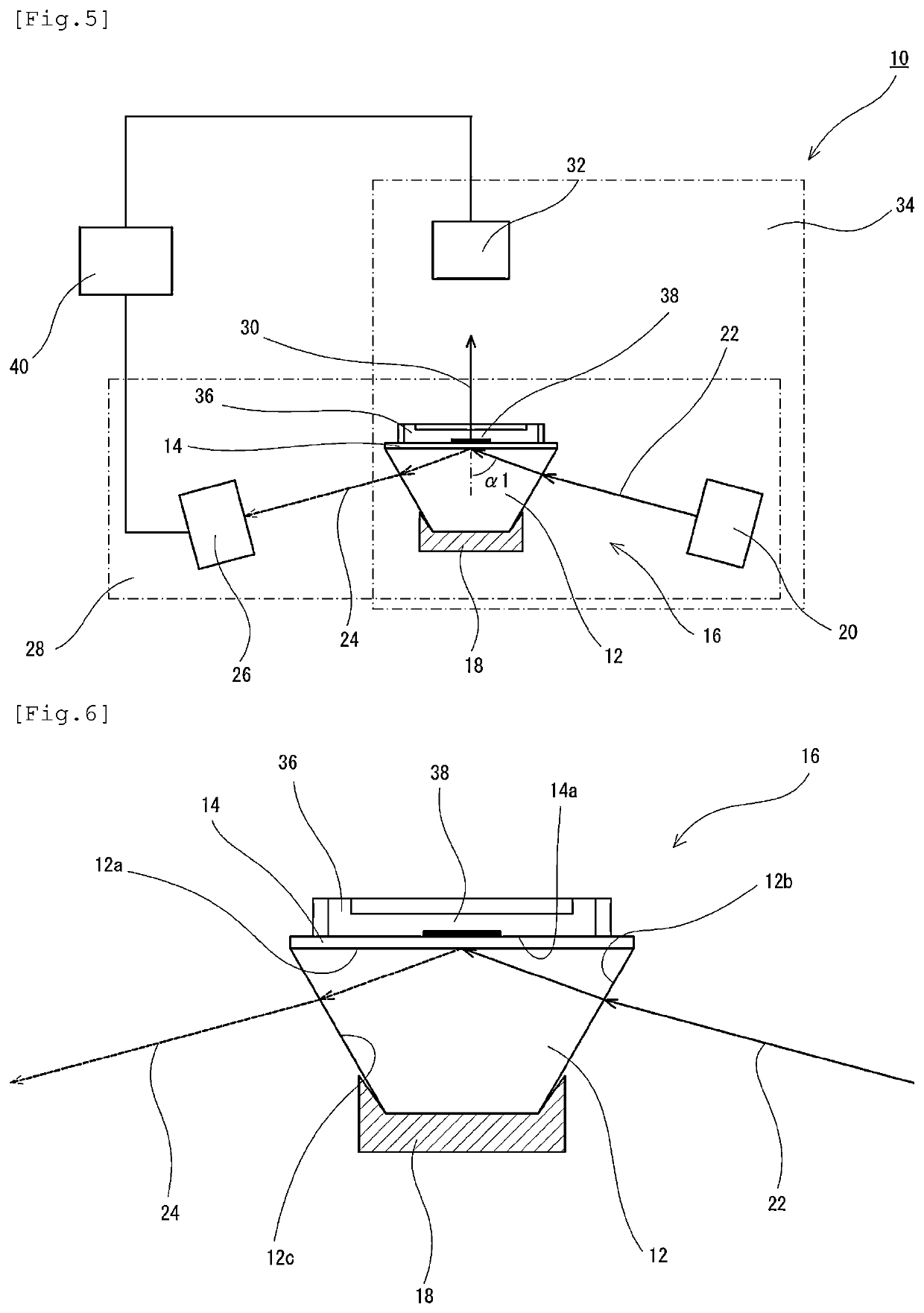Antigen detection method which uses lectin and comprises enzyme treatment step
a detection method and enzyme treatment technology, applied in the field of antigen detection methods using lectins, can solve the problems of difficult preparation of antigens against sugar chains, low specificity of lectins, and low binding activity of lectins, and achieve the effects of improving detection sensitivity and quantitative performance, simple technique, and simple constitution
- Summary
- Abstract
- Description
- Claims
- Application Information
AI Technical Summary
Benefits of technology
Problems solved by technology
Method used
Image
Examples
preparation example 1
[Anti-PSA Antibody-Solid Phased SAM Film (Substrate)]
[0146]In the external flow path to which the plasmon excitation sensor was connected as described above, ultrapure water and then phosphate buffered saline (PBS) were circulated for 10 minutes and 20 minutes, respectively, using a peristaltic pump at a room temperature (25° C.) and a flow rate of 500 uL / min, thereby equilibrating the surface of the plasmon excitation sensor.
[0147]Subsequently, after transferring and circulating 5 mL of a phosphate buffered saline (PBS) containing 50 mM of N-hydroxysuccinic acid imide (NHS) and 100 mM of water-soluble carbodiimide (WSC) for 20 minutes, 2.5 mL of an anti-PSA monoclonal antibody solution (No. 79, 2.5 mg / mL; manufactured by Mikuri Immunolaboratory, Ltd.) was circulated for 30 minutes to solid-phase the antibody on the SAM film, thereby preparing an anti-PSA antibody-solid phased SAM film.
[0148]It is noted here that a non-specific adsorption-inhibiting treatment was performed in the fl...
preparation example 2
[Anti-AFP Antibody-Solid Phased SAM Film (Substrate)]
[0150]An anti-AFP antibody-solid phased SAM film was prepared in the same manner as in Preparation Example 1, except that an anti-AFP monoclonal antibody (1D5, 2.5 mg / mL; manufactured by Japan Clinical Laboratories, Inc.) was used in place of the anti-PSA antibody.
Preparation of Labeled Lectins
production example 1
[Fluorescently-Labeled WFA Lectin]
[0151]A fluorescently-labeled WFA lectin was produced using a fluorescent substance labeling kit, “Alexa Fluor (registered trademark) 647 Protein Labeling Kit” (manufactured by Invitrogen Corp.). Then, 100 μg equivalent of a WFA lectin (L-1350, manufactured by Vector Laboratories, Inc.), 0.1M sodium bicarbonate and Alexa Fluor 647 reactive dye were mixed and allowed to react at room temperature for 1 hour. Subsequently, the resultant was subjected to gel filtration chromatography and ultrafiltration, thereby removing Alexa Fluor 647 reactive dye that was not utilized in labeling to obtain a fluorescently-labeled WFA lectin. Thereafter, the absorbance was measured to determine the concentration of the labeled lectin.
PUM
| Property | Measurement | Unit |
|---|---|---|
| chemiluminescent substance | aaaaa | aaaaa |
| stability | aaaaa | aaaaa |
| concentration | aaaaa | aaaaa |
Abstract
Description
Claims
Application Information
 Login to View More
Login to View More - R&D
- Intellectual Property
- Life Sciences
- Materials
- Tech Scout
- Unparalleled Data Quality
- Higher Quality Content
- 60% Fewer Hallucinations
Browse by: Latest US Patents, China's latest patents, Technical Efficacy Thesaurus, Application Domain, Technology Topic, Popular Technical Reports.
© 2025 PatSnap. All rights reserved.Legal|Privacy policy|Modern Slavery Act Transparency Statement|Sitemap|About US| Contact US: help@patsnap.com



